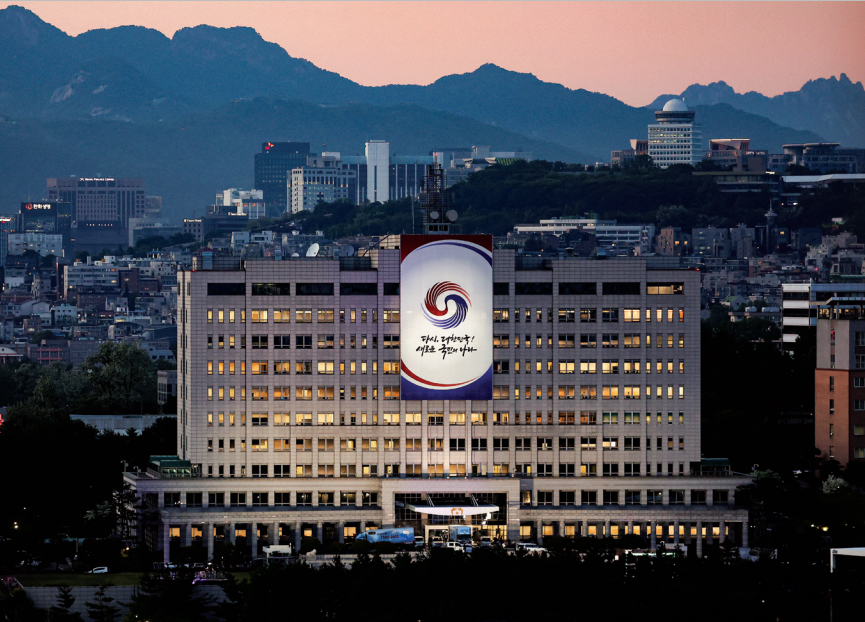In his inauguration ceremony, Korea’s 20th President Yoon Suk Yeol, stated his commitment to rebuilding Korea into a country where people are truly sovereign, based on the principle of free democracy and a market economy. He also kept his word to relocate the Presidential office from Cheongwadae to the former Ministry of National Defense (MND) building in Yongsan, and return the former Presidential building to the people. The relocation of the Presidential Bonghwang emblem to Yongsan marked the beginning of the “Yongsan Era.” President Yoon expects that, by frequently communicating with his staff in a single building, the government will be able to address the adverse side effects of the “Imperial Presidential System.” The MND building already has a built-in bunker, which is required for security purposes. With the scheduled return of the former US military campsite to Korea and the subsequent construction of a park, the relocation is further expected to expand the contact points between the President and the people.

In addition to opening up the Yongsan Era, President Yoon announced the new government’s six goals, 23 promises, and 120 policy tasks aligned with his vision of “A Republic of Korea that leaps anew, a people’s nation of co-prosperity.” The six goals are: an upright country where common sense is restored; a dynamic economy led by the people and backed by the government; a society where everyone is happy, in warm company; a bold future created through freedom and creativity; a global nation that contributes to freedom, peace, and prosperity; and an era of regions that makes it good to live anywhere in the Republic of Korea.
To achieve these goals, the president plans to abolish the previous administration’s nuclear power phase-out policy, innovate public institutions, support private-led growth, consolidate sound fiscal practices, elevate the standing of K-content, become a space powerhouse, and provide support tailored to young workers.
To restore the nuclear powerplant ecosystem, the Yoon Suk Yeol government established a goal of launching and executing nuclear powerplant projects worth KRW 130 billion in 2022, and additional projects worth KRW 1 trillion or more by 2025. The government also announced a roadmap for developing small modular reactors and exporting ten nuclear powerplants by 2030. The positive signs for the new government include the inclusion of nuclear power generation in the Korean Taxonomy (K-Taxonomy).

Office of the President in Yongsan
In addition to opening up the Yongsan Era, President Yoon announced the new government’s six goals, 23 promises, and 120 policy tasks aligned with his vision of “A Republic of Korea that leaps anew, a people’s nation of co-prosperity.” The six goals are: an upright country where common sense is restored; a dynamic economy led by the people and backed by the government; a society where everyone is happy, in warm company; a bold future created through freedom and creativity; a global nation that contributes to freedom, peace, and prosperity; and an era of regions that makes it good to live anywhere in the Republic of Korea.
To achieve these goals, the president plans to abolish the previous administration’s nuclear power phase-out policy, innovate public institutions, support private-led growth, consolidate sound fiscal practices, elevate the standing of K-content, become a space powerhouse, and provide support tailored to young workers.
To restore the nuclear powerplant ecosystem, the Yoon Suk Yeol government established a goal of launching and executing nuclear powerplant projects worth KRW 130 billion in 2022, and additional projects worth KRW 1 trillion or more by 2025. The government also announced a roadmap for developing small modular reactors and exporting ten nuclear powerplants by 2030. The positive signs for the new government include the inclusion of nuclear power generation in the Korean Taxonomy (K-Taxonomy).
